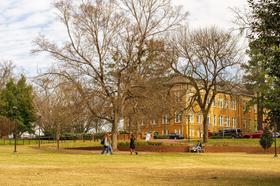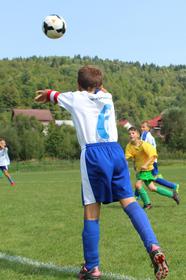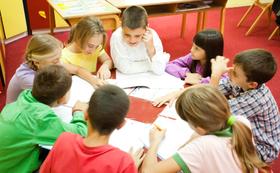North Dakota is the #44 largest school system in the United States, serving 122,204 students across the 536 public schools for the 2025-26 school year (there are , serving 11,847 students). 91% of all K-12 students in North Dakota attend public schools, compared to the national average of 90%.
The percentage of students achieving math proficiency in North Dakota is 39%. The percentage of students achieving reading proficiency is 44%.
The top-ranked public schools in North Dakota are Sweet Briar School, Demores Elementary School, and Longfellow Elementary School. Overall testing rank is based on a school's combined math and reading proficiency test scores.
There are 33 Blue Ribbon Schools. Minority enrollment is 29%, with the majority being American Indian or Hispanic and the student-teacher ratio is 12:1.
Top Ranked Public Schools in North Dakota (2025-26)
School
(Math and Reading Proficiency)
(Math and Reading Proficiency)
Student Proficiency
Grades
Location
Rank: #11.
Sweet Briar School
(Math: 60-79% | Reading: ≥80%)
Rank:
Rank:
10/
Top 1%10
Math: 60-79% (Top 5%)
Reading: ≥80% (Top 1%)
Grades: K-8
4060 County Rd 83
Mandan, ND 58554
(701) 663-7453
Mandan, ND 58554
(701) 663-7453
Rank: #22.
Demores Elementary School
(Math: 60-79% | Reading: 60-79%)
Rank:
Rank:
10/
Top 1%10
Math: 60-79% (Top 5%)
Reading: 60-79% (Top 5%)
Grades: PK-8
350 Broadway
Medora, ND 58645
(701) 623-4868
Medora, ND 58645
(701) 623-4868
Rank: #33.
Longfellow Elementary School
(Math: 75-79% | Reading: 65-69%)
Rank:
Rank:
10/
Top 1%10
Math: 75-79% (Top 1%)
Reading: 65-69% (Top 5%)
Grades: K-5
20 29th Ave Ne
Fargo, ND 58102
(701) 446-5000
Fargo, ND 58102
(701) 446-5000
Rank: #44.
North Border-walhalla Elementary School
(Math: 70-74% | Reading: 65-69%)
Rank:
Rank:
10/
Top 1%10
Math: 70-74% (Top 5%)
Reading: 65-69% (Top 5%)
Grades: PK-8
605 10th St
Walhalla, ND 58282
(701) 549-3751
Walhalla, ND 58282
(701) 549-3751
Rank: #55.
Prairie Rose Elementary School
(Math: 70-79% | Reading: 60-69%)
Rank:
Rank:
10/
Top 5%10
Math: 70-79% (Top 1%)
Reading: 60-69% (Top 5%)
Grades: K-5
2200 Oahe Bend
Bismarck, ND 58504
(701) 323-4280
Bismarck, ND 58504
(701) 323-4280
Rank: #66.
Linton Elementary School
(Math: 65-69% | Reading: 65-69%)
Rank:
Rank:
10/
Top 5%10
Math: 65-69% (Top 5%)
Reading: 65-69% (Top 5%)
Grades: PK-8
101 Ne 3rd St
Linton, ND 58552
(701) 254-4138
Linton, ND 58552
(701) 254-4138
Rank: #7 - 97. - 9.
Hebron Elementary School
(Math: 60-69% | Reading: 60-69%)
Rank:
Rank:
10/
Top 5%10
Math: 60-69% (Top 5%)
Reading: 60-69% (Top 5%)
Grades: K-6
400 Church Ave
Hebron, ND 58638
(701) 878-4442
Hebron, ND 58638
(701) 878-4442
Rank: #7 - 97. - 9.
Scranton Elementary School
(Math: 60-69% | Reading: 60-69%)
Rank:
Rank:
10/
Top 5%10
Math: 60-69% (Top 5%)
Reading: 60-69% (Top 5%)
Grades: PK-6
1st And Fries
Scranton, ND 58653
(701) 275-8266
Scranton, ND 58653
(701) 275-8266
Rank: #7 - 97. - 9.
William S Gussner Elementary School
(Math: 70-74% | Reading: 60-64%)
Rank:
Rank:
10/
Top 5%10
Math: 70-74% (Top 5%)
Reading: 60-64% (Top 10%)
Grades: PK-5
1509 4th St Ne
Jamestown, ND 58402
(701) 252-3846
Jamestown, ND 58402
(701) 252-3846
Rank: #10 - 1110. - 11.
Carrington High School
(Math: 60-64% | Reading: 65-69%)
Rank:
Rank:
10/
Top 5%10
Math: 60-64% (Top 10%)
Reading: 65-69% (Top 5%)
Grades: 7-12
100 3rd Ave S
Carrington, ND 58421
(701) 652-3136
Carrington, ND 58421
(701) 652-3136
Overview
This State (ND)
# Schools
536 Schools
# Students
122,204 Students
Gender %
# Teachers
9,917 Teachers
Student-Teacher Ratio
12:1
Student By Grade
State Acdeamy
State Average (ND)
Math Test Scores (% Proficient)
39%
Reading/Language Arts Test Scores (% Proficient)
44%
Science Test Scores (% Proficient)
45%
Graduation Rate
85%
Eligible for Free Lunch
26%
Eligible for Reduced Lunch
6%
Students by Ethnicity:
Diversity Score
0.48
# American Indian Students
13,081 Students
% American Indian Students
11%
# Asian Students
1,750 Students
% Asian Students
1%
# Hispanic Students
8,336 Students
% Hispanic Students
7%
# Black Students
6,528 Students
% Black Students
5%
# White Students
86,542 Students
% White Students
71%
# Hawaiian Students
374 Students
% Hawaiian Students
n/a
# Two or more races Students
5,593 Students
% of Two or more races Students
5%
All Ethnic Groups
State Revenue and Spending
This State (ND)
Total Revenue
$2,154 MM
Spending
$2,154 MM
Revenue / Student
$17,628
Spending / Student
$17,630
Best North Dakota Public Schools by County (2025-26)
Popular neighborhoods: Carl Ben (3 schools), Downtown (3 schools), Lewis And Clark (2 schools), Washington (2 schools), Bennett (1 schools).
County
# Schools
# Students
% Minority
Frequently Asked Questions
What are the top ranked public schools in North Dakota?
The top-ranked public schools in North Dakota include Sweet Briar School, Demores Elementary School, and Longfellow Elementary School.
How many public schools are located in North Dakota?
536 public schools are located in North Dakota.
What percentage of students in North Dakota go to public school?
91% of all K-12 students in North Dakota attend public schools (compared to the national average of 90%).
What is the racial composition of students in North Dakota?
Minority enrollment in North Dakota is 29%, with the majority being American Indian or Hispanic.
Which public schools in North Dakota are often viewed compared to one another?
Popular comparisons of public schools in North Dakota include: Scranton High School vs. Bowman Co High School, Beulah High School vs. Hazen High School, Alexander Elementary School vs. Badlands Elementary School
Recent Articles

School Vouchers 2025: Updated Pros and Cons
A 2025 update on school vouchers, including benefits, drawbacks, enrollment trends, and how vouchers affect public and private education.

The Role of Arts in Public Schools (2025 Update)
Explore why arts education remains vital in U.S. public schools, with updated data, new policy context, and insights for parents, students, and educators.

The Role of Sports in Public Schools in 2025
How sports in public schools shape learning, health, and community in 2025, with updated data, trends, and expert insights.





